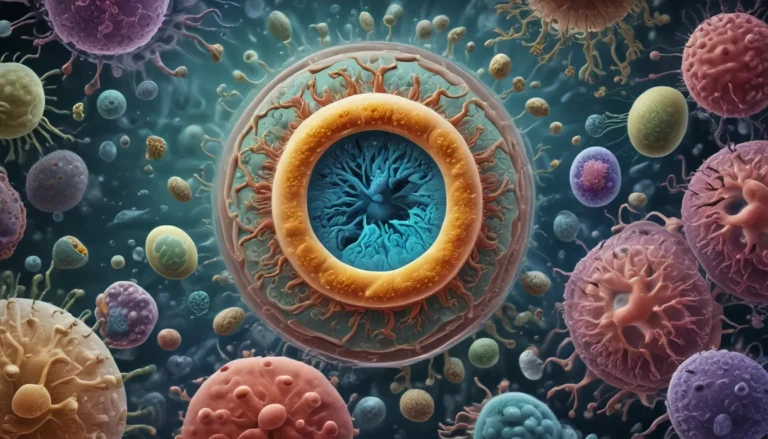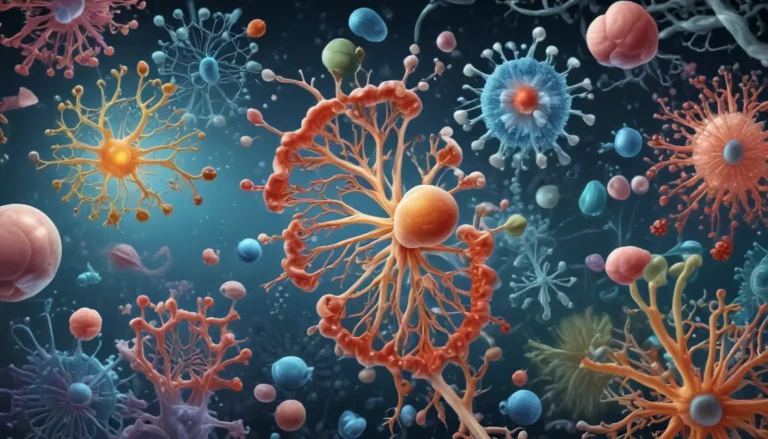A Note About Images: The images used in our articles are for illustration purposes only and may not exactly match the content. They are meant to engage readers, but the text should be relied upon for accurate information.
Welcome to the captivating world of metabolic pathways, where intricate networks enable our cells to carry out essential biological processes like energy production, molecule synthesis, and waste elimination. These pathways, like busy highways in our bodies, are crucial for sustaining life, highly regulated by enzymes, and interconnected to create a giant puzzle influencing cellular functions. In this article, we will unravel the remarkable intricacies of metabolic pathways by exploring nine intriguing facts that shed light on their importance and complexities. From understanding the role of enzymes and coenzymes to exploring the significance of regulatory mechanisms, we will embark on an enlightening journey to discover the wonders of metabolic pathways!
The Essence of Metabolic Pathways
Metabolic pathways are fundamental to life, orchestrating a complex series of chemical reactions within living organisms. These pathways play a vital role in producing energy, breaking down molecules, and synthesizing new molecules necessary for cellular functions. Through a careful balance of anabolic and catabolic processes, metabolic pathways ensure the proper functioning and homeostasis of our bodies.
The Regulated Harmony of Enzymes
Enzymes act as catalysts in metabolic pathways, intricately regulating the chemical reactions that occur within our cells. This meticulous regulation ensures that the right molecules are produced in the right quantities at the right time, serving as the driving force behind the smooth operation of these pathways.
- Enzymes as catalysts ensure the efficiency and specificity of metabolic reactions.
- Regulatory mechanisms control enzyme activity, maintaining a balance in metabolic pathways.
- Feedback inhibition and allosteric regulation play crucial roles in modulating enzyme function within pathways.
The Interconnected Network of Metabolic Pathways
Metabolic pathways form an intricate web of interconnected networks, where the products of one pathway become the substrates for another. This interconnectedness allows for the efficient utilization of resources, the coordination of various cellular processes, and the maintenance of essential functions within the cell.
- Interconnected pathways enable the flow of molecules and the transfer of energy.
- Cross-talk between pathways influences cellular responses to changing environments.
- Understanding the interconnected nature of pathways provides insights into cellular metabolism and adaptation.
Genetic and Environmental Influences on Metabolic Pathways
Genetic factors and environmental cues play significant roles in shaping the efficiency and regulation of metabolic pathways. From the presence or absence of specific enzymes to nutrient availability and temperature, these factors can impact the activity and outcomes of metabolic processes within our cells.
- Genetic variations can influence enzyme expression and pathway regulation.
- Environmental conditions such as temperature and nutrient availability can modulate metabolic pathway activity.
- The interaction between genetics and the environment shapes the adaptability of metabolic pathways to changing conditions.
Metabolic Pathways in Health and Disease
Dysfunction in metabolic pathways can lead to a spectrum of diseases and disorders, highlighting the critical role these pathways play in maintaining health. From metabolic syndromes to disorders of carbohydrate and lipid metabolism, disruptions in metabolic pathways can have profound impacts on our well-being.
- Defects in glucose metabolism can lead to conditions like diabetes.
- Abnormalities in lipid metabolism are associated with cardiovascular disorders.
- Understanding the role of metabolic pathways in diseases opens avenues for therapeutic interventions and treatment strategies.
Harnessing Metabolic Pathways for Biotechnology
Metabolic pathways have vast potential in biotechnology, where they are harnessed to produce valuable compounds ranging from biofuels to pharmaceuticals. By engineering microbial cells to utilize specific pathways, scientists can unlock a range of applications that benefit industries and society as a whole.
- Metabolic engineering techniques manipulate pathways for industrial purposes.
- Biofuels, pharmaceuticals, and chemicals can be generated using metabolic pathways.
- The versatility of metabolic pathways in biotechnology presents opportunities for sustainable and innovative solutions.
Evolutionary Conservation of Metabolic Pathways
Metabolic pathways exhibit remarkable conservation across different organisms, underscoring their fundamental importance in sustaining life. From bacteria to humans, the core principles of energy production and molecule synthesis remain constant, reflecting the early origins and evolutionary significance of these pathways.
- Conservation of metabolic pathways highlights their essential role in cellular metabolism.
- Similarities in pathways across species suggest shared ancestry and functional importance.
- Evolutionary conservation provides insights into the adaptive nature of metabolic pathways and their relevance to diverse life forms.
Ongoing Research and Future Prospects
The study of metabolic pathways continues to be a dynamic and evolving field, with researchers uncovering new insights and discoveries. By delving deeper into the intricacies of these pathways, scientists aim to elucidate disease mechanisms, develop novel therapies, and enhance biotechnological applications for the benefit of humanity.
- Continuous research explores novel aspects of metabolic pathways and their regulation.
- Insights from metabolic pathways inform drug development and precision medicine.
- Future prospects in metabolic pathway research hold promise for addressing complex health challenges and advancing scientific knowledge.
Conclusion
Metabolic pathways represent the cornerstone of cellular metabolism, orchestrating a symphony of biochemical reactions that sustain life. By unraveling the intricacies of these pathways, we gain profound insights into the fundamental processes that drive biological functions and health outcomes. From diseases to biotechnology, metabolic pathways offer a wealth of opportunities for scientific exploration and innovation, shaping the future of medicine and industry.
Join us on this fascinating journey through the world of metabolic pathways, where each discovery promises to expand our understanding and appreciation of the complexities that define life itself. Embrace the wonders of cellular metabolism and embark on a biochemical adventure that will captivate your curiosity and inspire your imagination.
FAQs: Unveiling the Mysteries of Metabolic Pathways
-
What are metabolic pathways?
Metabolic pathways are intricate networks of interconnected chemical reactions within living organisms that facilitate energy production and molecule synthesis. -
How do metabolic pathways work?
Metabolic pathways involve a series of enzymatic reactions where specific enzymes catalyze each step, ensuring the continuous flow of substrates and products. -
How are metabolic pathways regulated?
Metabolic pathways are regulated through feedback inhibition, allosteric regulation, and hormonal control, maintaining a delicate balance of biochemical reactions. -
What happens if a metabolic pathway is disrupted?
Disruptions in metabolic pathways can lead to various disorders and diseases, impacting cellular functions and overall health. -
Can metabolic pathways be targeted for therapeutic purposes?
Yes, targeting specific metabolic pathways offers a viable approach for developing treatments for diseases by modulating enzyme activity and pathway function. -
Are all metabolic pathways the same in all organisms?
While basic principles of energy production and molecule synthesis are conserved, variations in metabolic pathways exist across different organisms based on their specific needs and environments. -
Is it possible to manipulate metabolic pathways for industrial purposes?
Yes, metabolic engineering techniques allow for the manipulation of pathways to produce valuable chemicals, biofuels, and pharmaceuticals, contributing to various industries. -
Are metabolic pathways influenced by diet and lifestyle?
Diet and lifestyle choices can impact metabolic pathways, influencing enzyme activity and pathway function based on nutrient intake and physical activities. -
How are genetic disorders related to metabolic pathways?
Genetic disorders can disrupt metabolic pathways by affecting enzyme function and molecule synthesis, leading to metabolic imbalances and health complications.
Join us in exploring the captivating world of metabolic pathways, where each discovery unveils a new layer of complexity and wonder in the realm of cellular metabolism. Let these intriguing facts ignite your curiosity and inspire a deeper appreciation for the intricate processes that sustain life and drive scientific progress.






